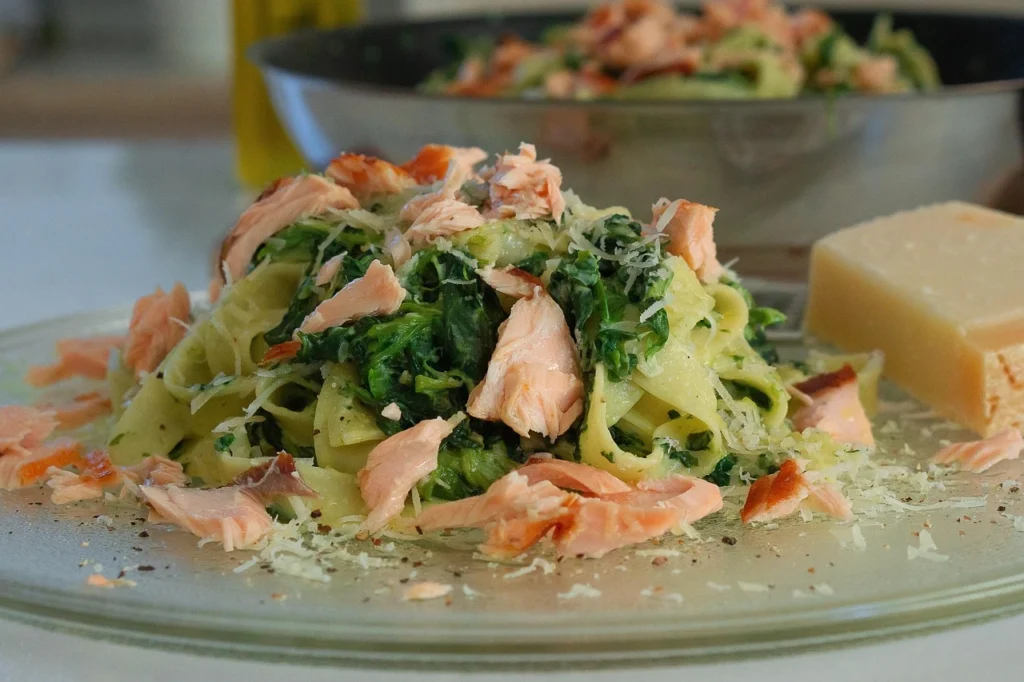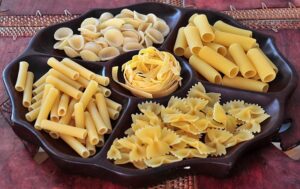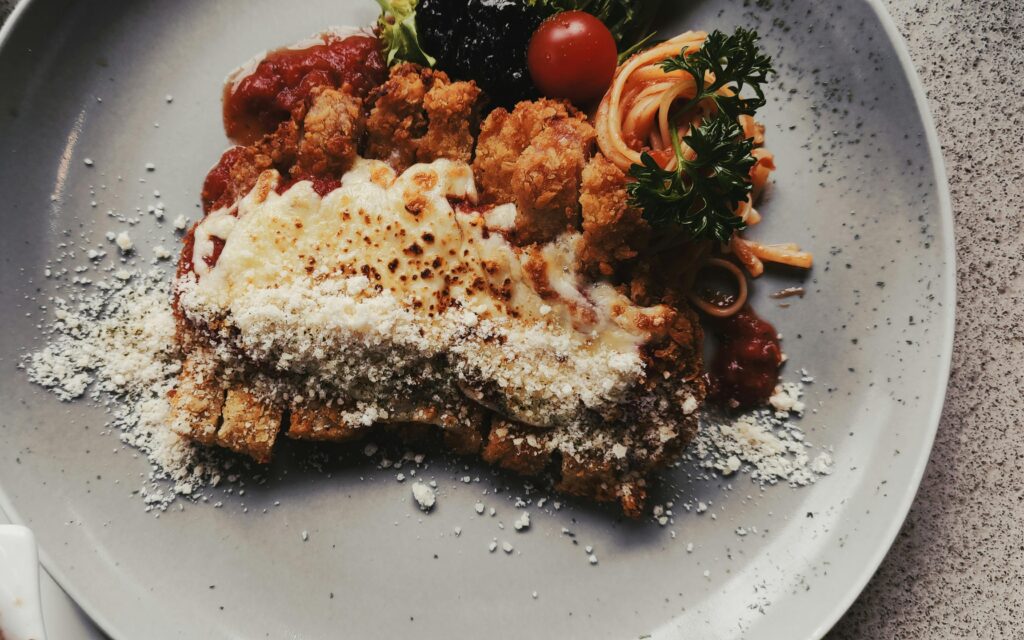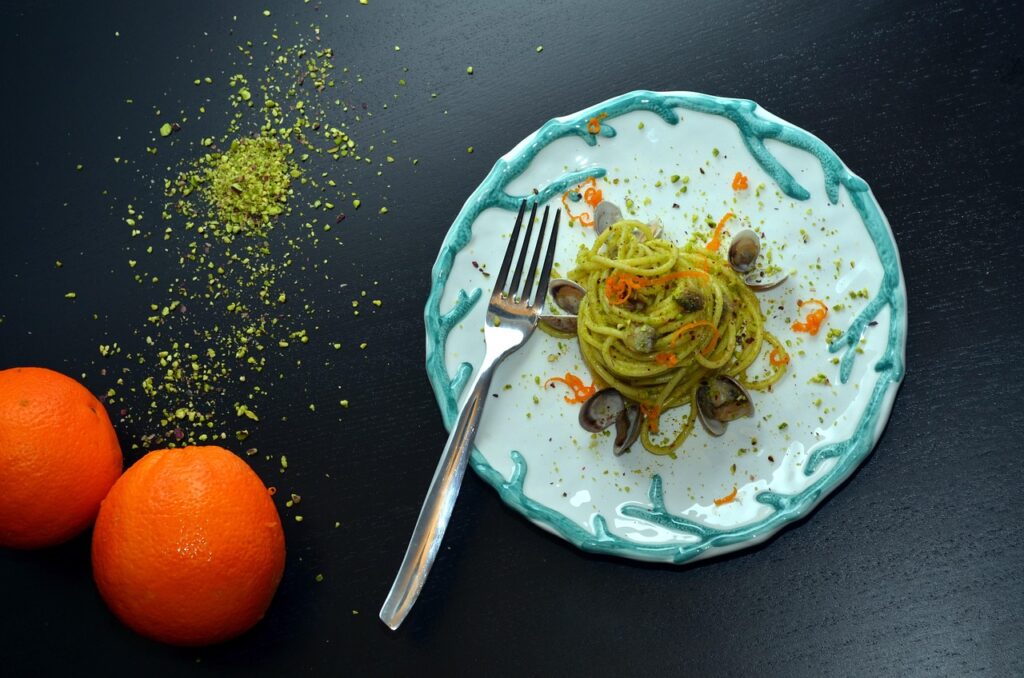Trenette: The Ligurian Pasta You Need to Know
Trenette is a narrow, flat pasta from Liguria, Italy, especially Genoa. Beloved locally, it pairs classically with pesto, potatoes, and green beans.
1. What is Trenette?
Trenette is a long, narrow, flat pasta from Liguria, Italy. It sits between linguine and tagliatelle in width (commonly ~3.5–4 mm). The shape and modest thickness make it ideal for carrying delicate sauces like Pesto alla Genovese. (Wikipedia).
2. The Ligurian Origins & Tradition of Trenette al Pesto
The classic Pate à la Reine with pesto, potatoes, and green beans. In Genoa, cooks often boil potatoes and green beans with the pasta, so the starch from potatoes helps the pesto cling. This trio grew from seasonal cooking and remains a regional favorite. (La Cucina Italiana).
3. Anatomy of the Pasta & Ingredient Quality
Quality matters. UTrenette from a reputable producer (bronze-extruded if possible), fresh basil, toasted pine nuts, and freshly grated Parmigiano Reggiano or Pecorino. Small waxy potatoes and tender green beans are the traditional vegetables.
4. The Perfect Recipe: Step‑by‑Step Guide
Below is an expert-level version of Trenette al Pesto. Keep timing tight and ingredients fresh. Serves 4.
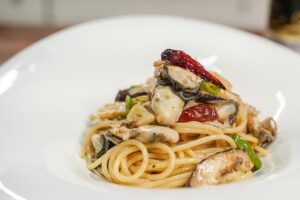
Ingredients
- 400 g Trenette (dried, good Trenette
- 200–250 g small waxy potatoes, peeled and diced ~1.5 cm
- 150–200 g green beans, trimmed and cut into 3–4 cm pieces
- 2 cups fresh basil leaves (loosely packed)
- 2 cloves of garlic
- 2 tbsp pine nuts (lightly toasted)
- 2 tbsp freshly grated Parmigiano Reggiano
- 1 tbsp freshly grated Pecorino Romano (optional)
- 80–100 ml extra virgin olive oil
- Coarse salt for pasta water; acceptable salt and pepper to taste
Method
- Wash and dry basil leaves; peel garlic. Toast pine nuts in a dry skillet until golden; cool.
- Make pesto: a mortar & pestle is ideal. Start with garlic and salt, add basil gradually, then pine nuts and cheeses. Drizzle oil slowly to emulsify. Alternatively, pulse in a food processor and stop before the basil darkens.
- Bring a large pot of water to a rolling boil; salt generously.
- Add potatoes first. After ~3–4 minutes. Stir to prevent sticking.
- When the pasta is halfway done, add the green beans so all components finish together.
- Reserve about 200 ml (1 cup) of pasta water. Drain pasta, potatoes, and beans together; do not rinse.
- In a large bowl, add a few tablespoons of pesto and a splash of pasta water; mix to loosen. Add pasta and vegetables; toss gently to coat with a silky emulsion. Use more pasta water if necessary.
- Serve immediately with extra grated cheese, a drizzle of olive oil, and torn basil.

5. Pro Tips: Texture, Sauce Emulsion, Timing
- Use a large pot to avoid crowding; pasta should move freely.
- Salt the water so it tastes like the sea; potatoes and pasta absorb salt.
- Reserve pasta water — it is essential for binding pesto into a glossy sauce.
- Make pesto just before tossing; avoid processor heat to keep basil bright.
- Use waxy potatoes and uniform dice to prevent them from disintegrating.
6. Variations, Substitutes & Dietary Adaptations
Substitutes: linguine or Bucatini. Bucatini is unavailable. Nut-free pesto can use toasted walnuts. Vegan versions omit cheese or use plant-based alternatives. For seasonal twists, mix basil with parsley or spinach.
7. Serving Suggestions & Pairings
Serve with a crisp salad and crusty bread. Pair with Ligurian whites such as Vermentino or Pigato, or a dry Prosecco. Garnish with extra pine nuts and a drizzle of good olive oil.
8. Common Mistakes & How to Avoid Them
- Over-blending pesto: avoid bitter, dark basil by stopping the processor early or using a mortar and pestle.
- Undersalting water: leads to bland pasta — salt well.
- Not reserving pasta water means the sauce won’t bind properly.
- Overcooking vegetables: add green beans late to keep texture.

9. Frequently Asked Questions: Trenette and how does it differ from linguine?
Trenette is a narrow, flat pasta from Liguria. It is similar to linguine but slightly thicker or more rounded in cross-section. Both work with PeTrenette, which offers a different mouthfeel.
Can I make pesto ahead of time?
Yes. Store pesto in an airtight container, cover the surface with olive oil, refrigerate for up to 48 hours, or freeze in cubes for more extended storage. Bring to room temperature before using.
Why add potatoes and green beans?
This is a traditional Ligurian method. Potatoes lend starch that helps sauce cling; green beans add texture and freshness. Cooking them with the pasta synchronizes timing and flavors.
10. Final Thoughts & Call to Action
Trenette is a simple dish that rewards attention. Treat each ingredient with respect — from basil to pasta water — and you’ll get a memorable plate. For a deeper understanding of pesto technique, try our Pesto Technique guide. Explore related reads on our site: Pasta Shapes and Ligurian Cuisine.
Further reading from trusted sources: Trenette on Wikipedia, La Cucina Italiana’s Trenette feature, and a Saveur pesto guide. These external links provide context and additional authority.

